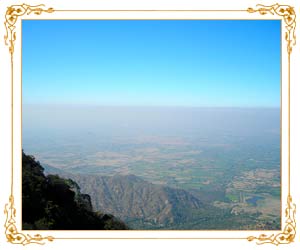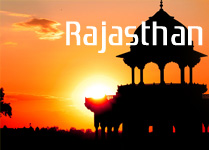 Broadly speaking, Rajasthan has a tropical desert climate. It is extremely cold from October to February while the scorching sun tortures the land from March to September. Due to scanty rainfall, women can be seen carrying water for miles to meet their daily needs during summers. To the south of Rajasthan, River Luni and River Chambal River and its tributaries bless the people with their water and form an alluvial basin in Kota.
Broadly speaking, Rajasthan has a tropical desert climate. It is extremely cold from October to February while the scorching sun tortures the land from March to September. Due to scanty rainfall, women can be seen carrying water for miles to meet their daily needs during summers. To the south of Rajasthan, River Luni and River Chambal River and its tributaries bless the people with their water and form an alluvial basin in Kota.Temperature
There are distinct temperature range variations diurnal and seasonally throughout the state, revealing the most typical phenomenon of the warm-dry continental climate. The summer begins in the month of March while the temperature keeps rising progressively through April, May and June. West of Rajasthan and the eastern side of Aravalli Range, in the region of Bikaner, Phalodi, Jaisalmer and Barmer, the maximum daily temperature hovers around 40°C to 45°C. Sometimes, it even reaches as high a 49°C during the summer months. Nights of summers see a considerable temperature fall with a minimum daily temperature around 20°C to 29°C. However, Udaipur and Mount Abu, have a pleasanter climate in summers with a relatively lower daily maximum temperature that reaches 38°C and 31.5°C, respectively. The daily minimum temperature at nights for these two stations hovers around 25°C and 22°C, respectively. The major portion of the state tat consists of the arid west and the semi-arid mid-west has an average maximum of 45°C in June.
January is the coldest month in the stare of Rajasthan. The minimum temperatures sometimes fall to -2°C in the night at places like Sikar, Churu, Pilani and Bikaner. The sandy land gets even colder with occasional secondary Western winds that cross the western, northern and eastern Rajasthan during winter months, and even cause light rainfall and chilly winds can be experienced during this period. Most of the Rajasthan, except the southeast Rajasthan comprising of Kota, Bundi and Baran and western Barmer have an average temperature of more than 10°C. Due to the cold western winds, the whole of Rajasthan sometimes come under the spell of the cold wave for 2 to 5 days during winters.
Rainfall
Rajasthan being the desert area, its climate varies mostly from arid to sub-humid. To the west of the Aravallis, the climate is marked by low rainfall, extreme diurnal and annual temperature, low humidity and high velocity winds. In the east of the Aravallis, the climate is semi-arid to sub-humid marked by lower wind velocity and higher humidity and better rainfall. The annual rainfall in the state differs significantly. The average annual rainfall ranges from less than 10 cm in north-west part of Jaisalmer region (lowest in the state), to 20 to 30 cm in the regions of Ganganagar, Bikaner and Barmer, 30 to 40 cm in the regions of Nagaur, Jodhpur, Churu and Jalor and more than 40 cm in the regions of Sikar, Jhunjhunun, Pali and the western fringes of the Aravalli range. The more fortunate eastern side of the Aravallis see 55 cm rainfall in Ajmer to 102 cm rainfall in Jhalawar. Mount Abu in the Sirohi district in the southwest region receives the highest rainfall in the state (163.8 cm). The southwest monsoon begins in the last week of June in the eastern parts and may last till mid-September. There are occasionally pre-monsoon showers in mid-June while post-monsoon rains may occur in October. Winters may also receive a little rainfall with the passing of western distribution over the region. However, Rajasthan receives most of its monthly rainfall during July and August.














